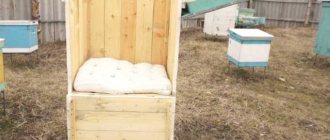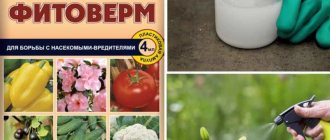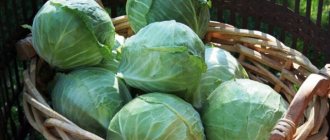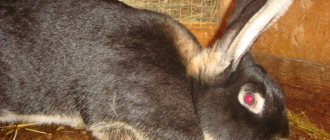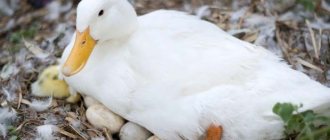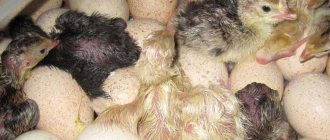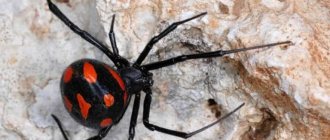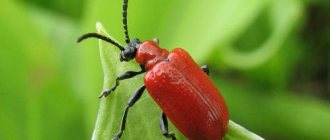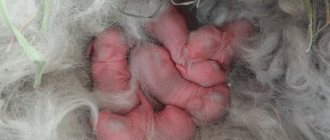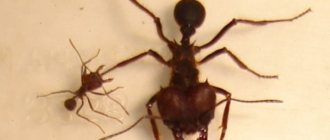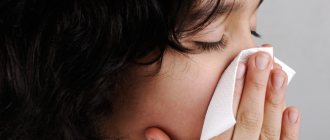Honey plants for bees - what they are, what are their features
Honey plants are those that, during the process of growth and flowering, produce pollen and nectar, which bees feed on, and process it into honey. Bee colonies fly up to 3 km from the apiary in search of attractive aromas of bright flowers of plants for food.
Honey plants can be cultivated, which beekeepers or agronomists sow specially (artificially), or wild, which grow and disperse naturally. In nature, there are many types of honey plants, which differ in appearance, structure, fertility and other things.
The peculiarities of these plants are that they emit a special aroma and bloom with bright flowers, which are very attractive to bee colonies. Honey plants are absolutely safe and are excellent nectar plants for feeding bees.
Honey bushes and trees
Among plants of this type, honey plants are usually shrubs or small trees. Their distinctive feature is that they are all perennials.
Barberry
This honey plant usually grows as a shrub; trees are less common. Provides large amounts of nectar in May-June. From one hectare you can collect up to 80 kg of product. Honey productivity from such an area is more than 23 kg.
Barberry honey has a light yellow color and a delicate and sweet taste. The aroma contains notes of spring flowers. The product has a medium viscosity.
Barberry honey has many healing properties. It is beneficial for the stomach and intestines, the genitourinary system, and provides an antibacterial effect. The product perfectly tones and has anti-inflammatory properties.
Hawthorn
Such trees and shrubs belong to late spring honey plants and are attractive to bees. Their honey productivity is moderate and can be up to 80 kg per hectare.
Hawthorn flowering lasts only a week and a half - at the end of spring and the very beginning of June. During this period, the plant emits an unpleasant odor, which insects do not pay attention to.
Hawthorn honey is dark in color with a reddish tint and has a slightly bitter taste. The product is highly valued for its healing properties, it is especially useful for the cardiovascular system.
Cowberry
This evergreen shrub provides support for bees. From one hectare of plantings you can get up to 50 kg of honey. Flowering lasts approximately 2 weeks and begins at the end of May.
Lingonberry honey is a natural medicine.
Vatochnik
This bush is capable of producing up to 700 kg of honey per hectare. One bee colony can collect more than 5 kg of nectar from this plant per day. It begins to bloom at the end of June.
Cottonweed honey has a special aroma and delicate taste. The color is very light, sometimes yellowish. When pumping in dry weather, the product is heated due to its heaviness and thickness.
The cottonweed has one negative feature - the legs of insects can be pinched in the pollen pockets of flowers. If the bee cannot free itself, it will die or, at best, remain crippled.
Yellow acacia (Caragana tree)
This shrub is the main honey plant of the early harvest. From one hectare you can collect up to 300 kg of product.
Acacia honey is transparent, light in color and has a pleasant aroma. It is attractive due to the absence of bitterness characteristic of other varieties. The product does not crystallize for a long time and can remain in liquid form throughout the year. It is often valued more than linden honey.
Acacia honey is easily digestible, has pronounced antiseptic properties, promotes digestion, and does not cause allergic reactions.
Willow
This woody plant is also called willow, willow, willow, willow. As a honey plant, the plant attracts with its early flowering, and in different species it occurs at different times, which allows you to extend the period of pollen collection.
A hectare of such plantings can provide up to 200 kg of honey. It is usually used for the development of bee colonies, but it is also available in commercial quality.
Chestnut
This tree is a spring honey plant and provides bees not only with pollen and nectar, but also with a sticky liquid. A distinctive feature of the plant is the change in color of the specks on the flowers from yellow to red. After such changes, the bees do not fly to the plant.
Chestnut flowering lasts about 2 weeks in May-June. The number of flowers and honey productivity depend on air temperature. On average, 25 kg of product is obtained from one hectare.
Chestnut honey has a liquid structure, dark brown color and transparency. It slowly crystallizes, remaining in a liquid state until spring. This does not apply to horse chestnut - the product obtained from it crystallizes instantly.
Chestnut honey has excellent bactericidal properties, which are often used in the treatment of respiratory tract pathologies.
Hazel
These shrubs and trees are also called hazel or hazelnut. This plant is not only a source of nuts, but also an excellent forest honey plant.
Hazel attracts with its early flowering - it begins at the end of April, and in some regions as early as February. The plant produces a lot of pollen, which is stored for future use for winter and early spring feeding of insects. In good weather, bees are brought out of the winter hut to collect pollen, stimulating the rearing of brood.
Linden
This tree is one of the most important summer honey plants. 700 kg of honey can be collected from one hectare, but the productivity of the plant depends on the weather and the age of planting.
The quality and type of linden honey depend on the region. The product may be transparent, colorless or light yellow. It is attractive with its sweet taste and pronounced aroma. Bitterness is characteristic of wild forest honey. A distinctive feature of the linden product is rapid crystallization with loss of transparency and acquisition of a coarse-grained structure.
Blueberry
This shrub is a spring-summer honey plant and is valued mainly for providing a supporting bribe. Honey productivity per hectare can reach 50-80 kg.
Blueberry honey is distinguished by its transparency, pleasant taste and special aroma. It has a light color and a reddish tint. The product is valued for its dietary and medicinal properties. Its use ensures the removal of toxins and radioactive elements from the body.
Bird cherry
These low trees are spring nectar and pollen bearers. Honey productivity per hectare is low - up to 20 kg.
Bird cherry honey is attractive for its healing properties. It strengthens the circulatory system, normalizes intestinal function, and relieves inflammation. The vitamin composition of the product is useful for strengthening the immune system.
There are many honey plants. Often those representatives of the flora that are considered common weeds are characterized by high honey productivity. Honey obtained from various plants differs in taste, viscosity, color, and aroma. Regardless of the source, this product has healing properties, but each plant has its own.
0
0
Copy link
Perennial honey plants for bees, the best honey plants sown specifically for bees
There are honey plants from which you can collect large quantities of high-quality honey. For good profits and a rich harvest, beekeepers must sow the fields with the necessary plants. Honey plants sown specifically for bees:
- White and yellow sweet clover is perennial, reaches 150 cm in height, is characterized by a persistent rich aroma and bright flowers. It grows in places where many plants cannot survive, for example, on roadsides or in ravines. From 1 hectare of field you can harvest up to 600 kg of crop.
- Sainfoin - grows throughout the middle zone, belongs to the legume family. Distribution area: meadows, forest edges and clearings. Seed, sand and Transcaucasian sainfoin are sown on the territory of Russia. The plant is used for hay and grass meal for farm livestock. Characterized by pink and purple flowers that are particularly attractive to bees. From 1 hectare of sainfoin fields, bee colonies collect up to 400 kg of honey.
- Mordovnik is a valuable honey plant and a highly fertile plant - from 1 hectare the honey yield is 1200 kilograms of honey. The plant is not afraid of drought, frost, with a strong rhizome. It grows almost everywhere, reaches 200 cm in length in the steppes, forest edges and on slopes.
- Blueberry is a medicinal plant with a wonderful delicate aroma, blue flowers in the shape of small bells. The smell of a bruise attracts bees from great distances. Unpretentious, all it needs to grow is the sun. From 1 hectare of bruise field you can collect 850 kg of product.
- Heather - the height of the plant is up to 70 cm, its feature is considered to be its evergreen color, it blooms with purple bells. The middle zone is excellent for heather and is absolutely unpretentious. The only condition for survival is that there should be no alkaline substances in the soil. Up to 200 kg of honey is collected from 1 hectare of land.
- Linden is a honey plant that has no equal. From 1 hectare, 100 kg of the most valuable honey is collected, which contains a huge amount of healing components. From 1 mature tree, bees can collect 3-5 buckets of honey. However, with strong winds, drought and rain, the nectar is washed away and blown away. Natural disasters lead to a sharp decrease in harvest.
Perennial honey plants for bees are especially valued among beekeepers. Sown perennial plants help maintain the required growth. Which plant to sow for harvest is up to everyone. It is profitable to sow perennials; you can draw up a calendar of honey plants and reap a good harvest and keep your business at a high level.
The focus is on the honey plant bruise as a reflection of the unique capabilities of Mother Nature
Refined taste, indescribable aroma, a lot of useful properties - this is what honey is, which is produced by a modest, inconspicuous at first glance plant, the common bruise.
Its small pink bell-shaped flowers, which over time acquire a blue color, are collected in the so-called. curls forming spike-shaped inflorescences. They are capable of secreting a considerable amount of nectar (16 mg), which drives all the bees crazy with its indescribable fragrance.
Yes, it’s not for nothing that bruise is included in the TOP 10 most honey-bearing herbs! It rightfully takes an honorable place in this list, being located next to everyone’s favorite linden tree.
Two-year-old bruise is a honey plant that has earned the title of the most valuable crop in beekeeping. Judge for yourself:
- A persistent, picky bruise can grow in the harshest conditions, presenting only one condition to the beekeeper who sowed it - good sunlight.
- Does not require complex agrotechnical measures.
- The initial planting of the plant's seeds is subsequently replaced by its self-sowing.
- The flowering of the bruise, which begins in June, does not stop until the first frost.
- The nectar stays firmly in the flowers, not evaporating in the heat or being washed away by rain.
- The honey productivity of 1 hectare of bruise is 850 kg.
In addition, it is also a very beautiful plant, especially when its flowers turn blue. People call the carpet of heavenly beauty the field on which an extraordinary ordinary bruise grows. :))
Well? Have you already decided which honey-bearing plants you will sow in your home? If not, then read on. :))
What types of honey plant seeds are there, price. Honey plant mixture
Honey plant seeds are used for sowing honey plants, which help to retain honey and also increase the main honey yield. Honey plants are divided into bushes, garden flowers and trees, wild flowers, and weeds.
There are honey plant seeds in pure and mixed forms. Pure - plants of one type of crop, for example, phacelia or meadow clover. Mixed - several crops in one package of seeds. The mixed seed type of crops provides a continuous flower-nectar conveyor, which gives a good harvest and a sufficient amount of food for bees.
You can buy seeds in Moscow for 1 kilogram at approximately the following prices:
- Phacelia – 120 rubles.
- Bruise – 200 rubles.
- Yellow clover – 90 rubles.
- Clover -170 rubles.
- Mustard – 35 rubles.
- Milk thistle – 180 rubles.
- Mordovnik – 650 rubles.
Unpretentious herbs
Honey flowers for bees can be represented in gardens not only by traditional cultivated species. Some herbs, including wild ones, have beautiful inflorescences and at the same time provide a good harvest.
Phacelia , cultivated mainly artificially, is extremely attractive to bees and produces up to 40-50 kilograms of nectar per hectare at a time when other honey plants have not yet bloomed in nature.
Goldenrod , a late honey plant, blooms from late June to September. The grass has bright golden-yellow inflorescences collected in clusters. From them, bees take both pollen and nectar - on average from 50 to 150 kilograms per hectare (the maximum bribe is noted in Poland and Canada).
Mordovnik is a herb with beautiful round inflorescences, considered a first-class honey plant. Blooms in mid-summer - June, July. For an apiary, two varieties are most valuable: ordinary and ball-headed. When continuously sown in the fields, they produce from 300 to 340 kilograms of nectar per hectare. In the garden, the indicators will be more modest, since the owners will allocate relatively small areas for honey plants.
Bruiseweed is not only a hardy biennial or perennial weed, but also an excellent source of nectar. It has beautiful purple or blue flowers of irregular shape, collected in spectacular curls. From a hectare of continuous plantings, bees bring up to 300 kilograms of honey. Blooms from the second decade of June.
Snakehead is an essential oil herb that provides late harvest. Its blue-violet flowers bloom from mid-July, releasing nectar until early September. The honey plant is unpretentious in cultivation, but is sensitive to lighting and soil fertility. Nectar productivity is about 180-200 kilograms per hectare.
Dandelion officinalis is an unpretentious early flowering perennial that grows everywhere and in abundance. It is found en masse both in the middle zone and in the forest-steppe and steppe zones. Flowering lasts on average 2-3 weeks, starting at the end of May. Honey collection from this beautiful grass allows bee colonies to replenish their reserves of beebread. Nectar productivity is from 14 to 50 kilograms per hectare of continuous cover.
The honey plant takes root well directly at the point between the hives, which we, the vseopaseke.ru team, have personally seen. This plant is useful for bees, unpretentious, beautiful during flowering, and also rids the apiary of dirt (a continuous low-growing herbaceous cover is formed that does not require mowing).
Shrub (bush) honey plant
The bushes are distinguished by their unpretentiousness and undemanding nature over a large area. Shrubs are used to increase the harvest; in addition to nectar, they also produce small edible fruits. Among the shrubs, the following types of honey plants are found:
- common hazel;
- holly willow;
- currant;
- gooseberry;
- raspberries;
- thorn;
- sea buckthorn;
- blueberry;
- wolfberry;
- Tatarian honeysuckle;
- viburnum;
- yellow acacia;
- blackberry;
- common heather;
- medicinal hyssop;
- ordinary trouser leg;
- dogwood;
- agave honey plant - South American honey plant;
- barberry.
The shrubs bloom from early spring until September, with bright flowers and a pleasant aroma that attracts bees. The bushes are used as hedges; they do not interfere with the growth of other honey plants.
Honey flowers for bees
Herbs and flowers are excellent honey plants. Many herbs contain healing substances, which means honey also acquires medicinal properties. Among the popular flowers of Altai honey plants are:
- autumn kulbaba;
- coltsfoot;
- Syrian cottonweed;
- dandelion officinalis;
- common blackhead;
- mint;
- white mustard;
- Norychnik pineal;
- meadow cornflower;
- motherwort;
- ammi dental;
- lilac;
- sunflower;
- bird cherry;
- spurge;
- chestnut;
- black maple;
- Linden;
- hawthorn;
- white clover;
- lungwort;
- common coppice.
The best honey herbs are:
- yellow and white sweet clover;
- clover;
- hyssop;
- sow thistle;
- snakehead;
- catnip;
- lofant;
- oriental goat's rue;
- ordinary bruise;
- ball-headed Echinops;
- phacelia;
- flax honey plant;
- honey bush;
- Melissa;
- borage;
- angelica;
- goldenrod;
- amarat;
- sainfoin;
- safflower
Beekeepers are interested in flowers only during their flowering period, and they bloom for a short time. Therefore, beekeepers need to arrange a continuous conveyor of flowering herbs one after another. For this purpose, flowering calendars are compiled.
Varieties of honey crops
Experienced beekeepers select a special composition of honey herbs for sowing. To do this, they take into account several factors:
- when does flowering begin?
- flowering duration;
- healing properties;
- how much honey can be collected from a field of 1 hectare;
- annual or perennial plant.
The most honey-bearing and useful plants include:
- clover;
- sunflower;
- Melissa;
- buckwheat;
- peppermint;
- oregano;
- ordinary bruise;
- camelina sativum.
Clover not only has excellent honey-bearing qualities, but is also used as livestock feed; it contains a large amount of starch, sugars, vitamins E, C and P.
Sunflower, in addition to its honey-bearing properties, is grown for the production of sunflower oil and seeds - tasty fruits. In folk medicine, this sunny flower is used as a decoction to increase appetite, as an antipyretic and mild laxative.
Melissa, peppermint and oregano belong to the same family. These honey plants have found use in folk medicine and for making tonic teas.
The beneficial properties of buckwheat are known to everyone. Buckwheat groats are the seeds of the buckwheat plant. They ripen only in early or mid-autumn. Buckwheat is a dietary product. Prescribed to patients for recovery after surgery. Buckwheat contains iron, potassium, calcium, phosphorus, iodine, fluorine, molybdenum, vitamins E, B1, B6, B12. Its leaves also have medicinal properties; they are applied to wounds to relieve inflammation.
Garden flowers honey plants. Spicy honey plants
Among the garden flowers there are the following honey plants:
- lavender;
- sunflower;
- Echinacea purpurea;
- rose;
- snowdrop;
- geranium;
- moranda;
- hybrid daylily;
- onion and chives;
- sedum;
- goldenrod;
- crocus;
- buddleia;
- purple sapling;
- catnip;
- sage;
- heliotrope;
- cosmos doubly pinnate;
- gaillardia.
At the same time, chemicals and pesticides should not be used in the garden. There must be water for the bees. You need to be careful when attracting bee colonies if people nearby are allergic to them.
Honey plants - list, honey plants table
Table of the most popular honey plants
| Name | Description | Flowering period | Productivity (kg of honey per 1 ha) |
| Yellow acacia | Shrub, small tree, early honey plant in the Altai Territory | The beginning of June | Up to 1000 |
| Amaranth | Annual plant, up to 2 meters in height | July | 150 |
| Amorpha shrubby | A mediocre spring honey plant, but produces a lot of pollen. Not suitable for food for bees during wintering | April May | 50 |
| Hawthorn | Shrub with yellow pollen. Blooms with white flowers and is a good honey plant. | Mid May | 200 |
| Heather | An excellent autumn honey plant, valued by beekeepers. Contains a large amount of useful minerals. | Beginning of September | 100 |
| White mustard | Increases yield, annual plant | July | 100 |
| Buckwheat | Annual plant, cereal crop. Undemanding to soil. Grows up to 70 cm. Blooms with white flowers with a pink center | End of June | 90 |
| Yellow clover | A perennial plant, up to 150 cm in height, blooms with bright yellow flowers. Can handle heat easily | From May to August | 600 |
| Angelica | A tall perennial plant, up to 2000 cm in height, easily tolerates cold. Requires regular watering. | June | 400 |
| Snakehead | The plant is up to 1 m in height, blooms with bright yellow flowers. Undemanding, grows in many soils. | July | 300 |
| Goldenrod (scrofula) | Perennial goldenrod herbaceous plant, reaching a height of 1 m. | August | 190 |
| Ivan tea honey plant | A perennial herbal plant of the fireweed family, reaches 2 m in height. Blooms with pink and white flowers | July | 500 |
| Hyssop | Shrub, up to 50 cm high. An unpretentious perennial plant that easily tolerates cold and drought. | From July to late autumn | 300 |
| Chestnut | Tree of the beech family, up to 35 m high. Blooms with white flowers | End of June - July | 400 |
| Fireweed | The main honey plant of the middle zone, grows in forests. The bright flowers emit a pleasant sweet aroma when blooming. | July | 450 |
| Goat's rue, like a honey plant | Perennial plant, up to 0.5 m high. | May | 200 |
| Coriander | Annual essential oil plant, seed crop up to 120 cm in height. Blooms with old flowers with pink centers | End of June | 250 |
| Linen | A perennial field crop, up to 60 cm in height. Blooms with blue flowers. | June | 15 |
| Linden | One of the best trees - honey plants, is widely popular. Blooms with yellow flowers. | July | 1000 |
| Chives | A perennial onion cultivated plant, chives, is a honey plant that usually blooms 3 years after sowing. Bulbs are used for the food industry. | July | 100 |
| Alfalfa as a honey plant | Perennial legume plant, good honey plant. The blue or seeded alfalfa variety is prized. | June July | 300 |
| Spurge | Herbaceous perennial plant. It reaches a height of 80 cm. It blooms with yellow flowers. | June July | 270 |
| Sow thistle | A weed plant, found in gardens and orchards, near roads. Blooms with yellow flowers. | June | 380 |
| Sunflower | An annual cultivated plant, used for oil production. It has a thick stem and grows up to 3 meters in height. | Mid July | Up to 15 kg is harvested from 1 plant |
| Bird cherry | Grows as a shrub or small tree (subshrub). Produces a lot of pollen. | The end of May | 200 |
| Black Maple | Shrub, common in the middle zone. Blooms for 7-14 days. | Mid May | 300 |
| Sage | Perennial plant, grows in meadows and along roads, blooms with white and pink flowers | From May to September | 300 |
What blooms in Siberia
Siberia is cold, so common plants do not grow there, but other honey plants can be found:
- Rebrocarp Ural. Grows in forests. Productivity up to 180 kg.
- Thistle is a swamp . A perennial plant, but the quality of the honey is slightly lower than usual (not marketable). But the taste is good.
- Yellow acacia . One of the first honey plants in the world, it was used back in the 17th century. Nowadays they are used less often, because there are many other, better quality crops for bribes, and the plant is not very common. Productivity up to 100 kg.
Honey plants of the Leningrad region
The Leningrad region is characterized by the presence of forests, hills, lowlands and swamps. Initially, the area was dotted with pine forests, but later, with the help of humans, other honey plants appeared on the territory. Alder, aspen and willow grow around the swamps. A large number of natural wild honey plants grow in the region: birch, rowan, heather, berry bushes and others.
Nowadays there are many gardens and cottages here. Flowering of honey plants begins at the end of April and lasts until mid-September. Alder and aspen bloom first, then willow, then in mid-May the berry bushes (blueberries, currants, gooseberries) bloom. Afterwards, fruit trees, acacia, rowan, fireweed and heather begin to bloom successively. Raspberries, cereals and garden plants bloom from mid-June.
What is the best way to sow honey plants?
Anyone who has been breeding bees for many years knows which of these honey plants listed above is characterized by the best efficiency for a particular region.
In order not to make mistakes for beginners, you need to create a special calendar, planning it so that the crops bloom continuously.
In order to provide the apiary with a stable supply of nectar, large areas are required.
Accordingly, small landowners plant their apiaries with nectar-bearing trees and bushes, which helps maintain the working spirit in the hives throughout the season.
It is important to create a honey-bearing environment around the hives from the main sources of nectar: sweet clover, linden, cyanosis, phacelia. It is advisable that these crops be located within a radius of no more than 1.5 km.
Experienced owners advise sowing biennials under the cover of annual grasses: for example, sweet clover under alfalfa, bruise under phacelia.
It is recommended to cultivate honey plants with later growing seasons to collect seed material.
And to extend the budding period, you need to mow some of the grass crops until mid-June.
Between the hives, nectar-bearing weeds and ornamental crops are welcome - lungwort, motherwort, dandelion, loosestrife, mint, lemon balm.
Honey plants of Donetsk region
The Donetsk region is dotted with natural reservoirs, forests and forest plantations, steppes, and there is also a mountain range. Donetsk is characterized by a dense population, developed industry and agricultural land, nature reserves and other natural areas. Therefore, in this zone there is a huge number of plant honey plants, including wild forms.
The territory includes forests of linden, oak, ash, maple and white acacia. It is here that there are a large number of nomadic beekeepers. In the areas of the reserves, herbs are widespread, where there are huge fields of flowers. On the banks of rivers and in ravines, first-class honey plants grow - wild pear, ash, viburnum, yellow acacia, viburnum, and various shrubs. The most common honey plant throughout the Donbass is the rose hip, which grows almost everywhere. In the Shakhtarsky district there is white acacia, which is highly valued by beekeepers.
In the Donetsk region, honey plants begin to bloom from the beginning of spring until July inclusive. Typical shrub and medicinal herbs growing in the Donbass:
- blue snowdrops;
- toad picker;
- buttercup;
- coltsfoot;
- hazel;
- lungwort;
- valerian;
- irises;
- clover;
- fireweed;
- sage;
- buckwheat;
- bruise and much more.
Bee families collect more than 100 kilograms of honey from 1 hectare of honey plants in 1 season. This is one of the most popular areas for nomadic apiaries.
Evergreen heather: plant and appreciate!
The exquisite appearance of an elegant low shrub (its height does not exceed 70 cm) attracts attention simply by its rare decorative effect. Decorate your garden with this perennial plant - and the heather honey plant will not only delight you with the charm of lacy, seemingly weightless bell flowers densely hanging down the branches, but will also uninterruptedly provide your entire family with healing honey.
Heather loves the climate of the Russian central zone most of all. For him, only one thing matters: that the soil does not contain lime or calcium, because... heather is extremely sensitive to high alkalinity of the soil.
The rich flowering of heather lasts from July to September. The squat creeping shrub, being a powerful honey plant, attracts bees from all over the area with a strong smell and large reserves of nectar. And insects from everywhere flock to the feast prepared for them inside boiling white, soft pink or bright crimson flowers.
The honey productivity of flowering heather is impressive: on a hectare of continuous thickets, bees extract 150 - 200 kg of “liquid gold”. In a good year, a strong bee colony produces up to 30 kg of heather honey per season.
This honey stands out noticeably against the background of other varieties:
- it has a dark red color;
- its specific aroma is highly intense and persistent;
- the tart taste of heather honey is slightly bitter;
- it is characterized by a very long-crystallizing, unusually viscous consistency (which even complicates the process of extracting honey from the combs)
Well, how are you, aren’t you tired? Otherwise, I would like to finally say at least a few words of praise in honor of the linden tree: this honey-bearing tree, which all Russians so reverently love, is worthy of becoming the crown of our conversation.
Flowering calendar of honey plants in the middle zone
In order to find out the time of harvest from a certain type of plant, you need to learn how to use the flowering calendar of honey plants in the middle zone. The table below shows the approximate time of the beginning of flowering of plants and the period of their flowering.
| Honey plant name | Flowering start date | Flowering time (days) |
| Hazel | April 22 | 6 |
| Lungwort | April 23 | 30 |
| Willow | April 28 | 10 |
| Maple | May 15 | 10 |
| Gooseberry | May 18 | 31 |
| Dandelion | May 18 | 30 |
| Black currant | May 20 | 10 |
| Bird cherry | May 21st | 12 |
| Plum | 22nd of May | 7 |
| Acacia | May 25 | 13 |
| Apple tree | May 20 | 10 |
| Rowan | May 30 | 10 |
| Kalina | June 11 | 12 |
| Blue cornflower | June 15 | 45 |
| Clover | June 16 | 22 |
| Buckwheat | 5'th of July | 30 |
| Linden | July 8 | 14 |
With the help of such a calendar, it is easy to navigate the timing of harvesting the desired harvest in the desired area. Each beekeeper is required to draw up a flowering calendar for himself, taking into account the area and the presence of plants near the apiary. A properly compiled calendar helps the beekeeper reap a good harvest.
If the apiary is mobile and several moves are planned in one season, then the beekeeper must create as many calendars as there will be movements. Before compiling, it is necessary to carefully study the area, whether it is rocky or flat terrain, southern or northern region. Each region differs in the beginning and duration of flowering of honey plants.
A correctly compiled calendar and the ability to navigate the area allows the beekeeper to plan the work of the apiary, strengthen and increase the number of bee colonies. Also, with its help, beekeeping will always bring pleasure and profit. The main thing is to work fruitfully and “communicate” with the bees. Love and care for them will only bring benefits and delicious honey.
In nature, there are many honey plants that either grow naturally or are grown artificially. Each of them differs in type, shape, structure and amount of nectar and pollen secreted. Beekeepers carefully study the area around the apiary or roaming area, find future honey plants or sow new ones, and compile flowering calendars. With such responsible work, the bees will be well-fed, the harvest will be rich, and the bee business will be profitable.
Top 7 honey herbs by honey yield productivity
Honey plants are plants that bees use as a source of raw materials for the production of honey, bee bread, propolis and other waste products of the bee colony. The main collection comes from plant flowers, from where the bee takes nectar and pollen; in addition, the sticky substance is also removed from young shoots and leaves of grasses, trees, and shrubs. Here we will look at the 7 most productive honey-bearing grasses for bees in the middle zone of the steppe, forest-steppe zone of Ukraine, Belarus, Siberia, and the Far East in terms of honey yield from the sown area (in descending order). It should be noted that in specialized beekeeping farms these honey plants are sown specifically for bees.
